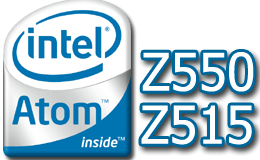Report: Intel Delays Launch of New Atom CPUs
The two upcoming new members to the Intel Atom family will be held back from release by a couple of weeks.
Just last week we learned that Intel will soon be releasing two new Intel Atom CPUs--the Z550 and the Z515. Now mobile internet device makers have told Digitimes that Intel has postponed the launch of the two new chips until mid-April.
While a delay of just a couple of weeks might not sound like much to consumers, system designers will have to re-juggle their plans to for a new launch date. So far, however, no systems based on the new chips have been announced, as they’re still under wraps at Intel.
Of the two new chips reported to launch soon, one is aimed at the higher-end while the other is for more modest applications. The high-end offering will be the Z550, which will bring the core clock speed to 2.0 GHz. It shall retain the same power characteristics as the 1.86 GHz Z540, thereby giving more performance per watt.
The second new Atom supposedly to be released is the Z515, which is expected to have a TDP of 0.65W to 1.4W, depending on mode, making it a good candidate for MIDs. The chip is to incorporate what is being called Intel Performance Burst Technology, which can put the chip at 800 MHz or 1.2 GHz.
Hopefully the introduction of the new Atom chips will provide a little more variety to the netbook market that’s ruled by the 1.6 GHz model.
We’ll let you know as soon as Intel makes the new chips official.
Get Tom's Hardware's best news and in-depth reviews, straight to your inbox.
-
the Z515 seems like a scaled down Atom processor.Reply
We'll probably see most netbooks coming out with a Z540, the Z550 seems like intel's going to price it higher price performance - wise.
1,8Ghz seems like more then enough, especially if memory controller/graphics onboard will also be made on a 45nm die.

